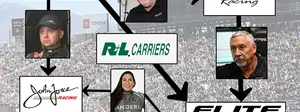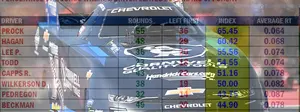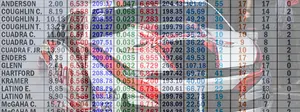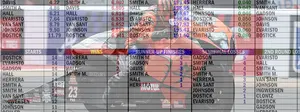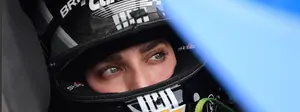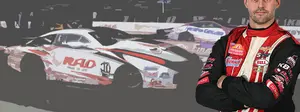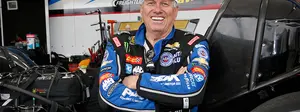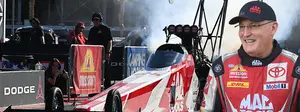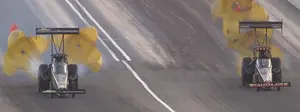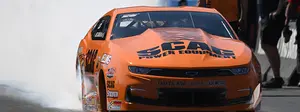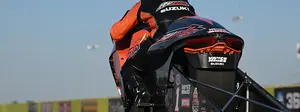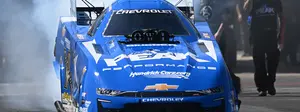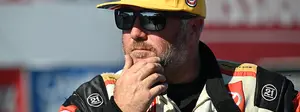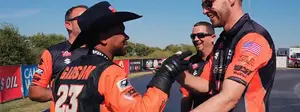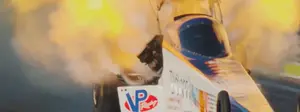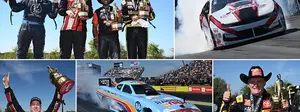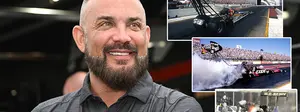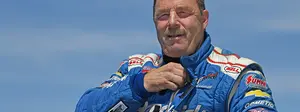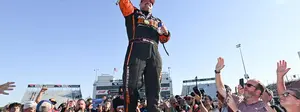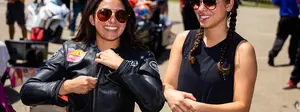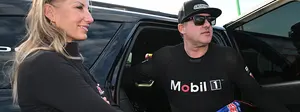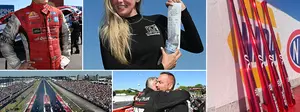

Benchmarking Pro Stock Motorcycle: It ain’t just Herrera versus the world
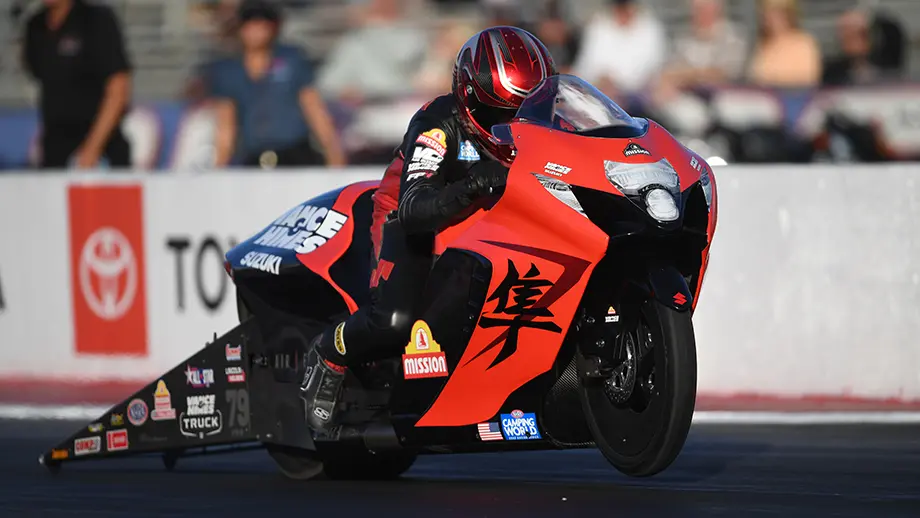
In some ways, Pro Stock Motorcycle presents the most interesting and challenging study in statistical breakdown over the last couple of seasons. Why? There are more outside forces working on this class than any other in the NHRA Mission Foods Drag Racing Series.
Over the course of the last couple of seasons, we have seen multiple weight adjustments, the introduction of the four-valve billet cylinder head for Suzuki engines, ever more refined bodywork for improved aerodynamics, and, of course, the emergence of the human highlight reel Gaige Herrera.
It bears mentioning this because the dynamic of winning a championship in Pro Stock Motorcycle will be different than any other Mission Foods Series class this year and the numbers will show us that. The simple reason is that in Pro Stock Motorcycle there is far more discoverable performance on the table than any of the other three Professional classes at the moment.
As much as we determined that the human factor is the decider in Pro Stock, the consistency front was the one that needed to be won in the Top Fuel and Funny Car wars, and it will be a combo of hot rodding, engineering, and flawless riding that will win in this class. We’ll say one thing right now, after doing this, we’re not going to look at the class the same way in 2024 that we did in 2023.
Now, let’s throw a leg over this thing and get started.
Qualifying
The first indication of how much the performance of premier-level Pro Stock Motorcycles has improved over the last handful of seasons comes at us when we observe the average elapsed time of the No. 1 qualifying position. Because of the complete domination of the 2023 season, we decided to dig even further back into 2021 to provide a more balanced look across the board here. In 2021, the No. 1 qualifier averaged an e.t. of 6.80. In 2022, that dropped to 6.77. In 2023? It plummeted to 6.73.
If we are looking at the top of the field, we should also look at the bottom. At races with a bump spot, the quickest bump in 2021 was 6.86 seconds. In 2022, it was 6.93, and in 2023, the quickest bump spot qualifier was 6.92. These numbers tell us one thing: The front of the pack is sure stretching themselves from the back and winning from the slower half of the field has become an even longer odds proposition than it has ever been.

Not unexpectedly, when we look at the average qualifying e.t.s of the category, they make the same kind of move as the No. 1 qualifier averages do. In 2021, Matt Smith led with an average of 6.82. In 2022, Angelle Sampey stair-stepped it down to a 6.809. In 2023, Gaige Herrera knocked the bottom out of it with an average of 6.748 over the course of the season. That is nearly a tenth of a second improvement in three years for the leading qualifier, which again comes from talent, parts, and technology meeting in a perfect nexus.
Lastly, we look at the best average qualifying position that will show us that the record skipped a beat last year in this category as well. In 2021, Smith was the best qualifier with an average position of 2.67. In 2022, Sampey had a typical starting spot of 2.27. In 2023, Herrera managed an other-worldly 1.13 qualifying position. If not the all-time best in the history of the class, it’s exceptionally close.
So what changes that for 2024? Smith being back on his Buell, Richard Gadson coming into the class on the second Vance and Hines motorcycle, increased performance by riders like Angie Smith and Jianna Evaristo, as well as continued rules management will likely present a more challenging road to the top for Herrera.
The Racing Numbers
Reaction time: As much as we have and will continue to look at the performance of the machines over the last three years, the riders need to be credited as well.

The starting line has become more airtight than ever. In 2021, Joey Gladstone wowed us all with a stout .036 average through the year. Then in 2022, Marc Ingwersen put on a display of aggression with a .019 average, which seemed unbeatable. Finally, in 2023, NHRA Rookie of the Year Chase Van Sant averaged an unreal .016 over his entire season. One can argue that the racers with the quicker qualified motorcycles do not need to push as hard, but the numbers are the numbers and to be “great” on the starting line now means you need to be effectively twice as quick as you were just two years ago. That’s mind-boggling.
Van Sant’s performance on average led to him crushing another category, and that was the “leaving first” numbers. In 2023, Van Sant left first 76% of the time on his Sunday opponents, a number that was not matched by any other competitor in any other category of NHRA professional drag racing. Herrera was second at 69%. By comparison, Gladstone led the class in this stat over the course of 2022, leaving first 54% of the time. Big gains made by great young riders here.

Elapsed time: Following the same trend as the qualifying elapsed time, elimination e.t.s also dropped like a stone. In 2021, Scotty Pollacheck was the quickest, averaging a 6.93. Eddie Krawiec led the pack in 2022 with a 6.86 and, no shocker here, Herrera blew them both out of the tub with a 6.79 average in 2023. Oddly, the spread between first and second in this category maintained at two- to three-hundredths at the same time with Krawiec being second behind Herrera in 2023, running 6.825 during full-throttle runs.
Speed: One number that dropped, perhaps as a result of the difficulty of consistently harnessing more power, was the Speed Index measure of full-throttle runs from 2022 to 2023. Matt Smith completed 94.6% of his runs at WOT in 2022 with Herrera doing it 92.7% in 2023. Gladstone was second in this stat in 2022 with a 92.9% rate while Krawiec was second in 2023 with a lower 88.1% average.

Round-wins: Lastly, we look at round-wins. Matt Smith had 38 in 2021, and in 2022, both he and Gladstone had 31. Herrera had 50 round-wins in 2023 during his utter domination of the class. Interestingly, the third spot was remarkably consistent: Sampey with 25 in 2021, Jerry Savoie with 26 in 2022, and Hector Arana Jr. with 26 in 2023.
As you can see, the motorcycles at the top of the pack have really picked up the pace over the last three seasons, so what does this mean for 2024? In reality, we have to be more speculative in the numbers needed to win a title this season beyond what we have seen in the other three classes.
Will the performance trend continue at a more measured rate? Will rules changes reign in some of the disparity we have outlined here? We’re betting on a yes answer to both of those questions. So, here’s where we think a rider will need to be in order to hoist the 2024 championship story:
- Average a qualifying position between second and fourth
- Average a qualifying elapsed time between 6.77 and 6.80
- Average a reaction time of .028 or better
- Leave first a minimum of 65% of the time
- Average 6.80-6.83 during eliminations
- Win a minimum of 36 rounds of Sunday competition
- Complete a minimum of 94% of elimination runs under power
We hope you have enjoyed this look across all the NHRA Mission Foods Professional classes. Print our performance projections out now, and we’ll revisit them at the end of the season to see if they are accurate or if the numbers have played a mean trick on us during this process!
Previously:























